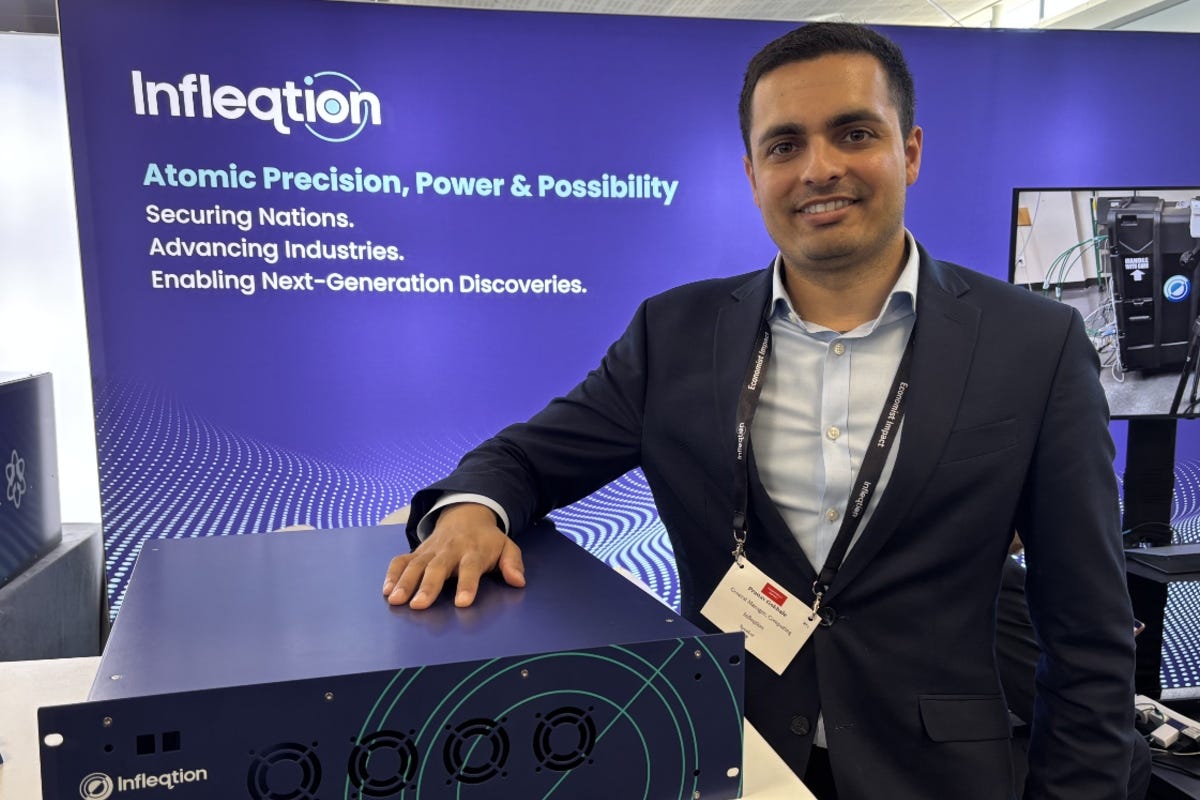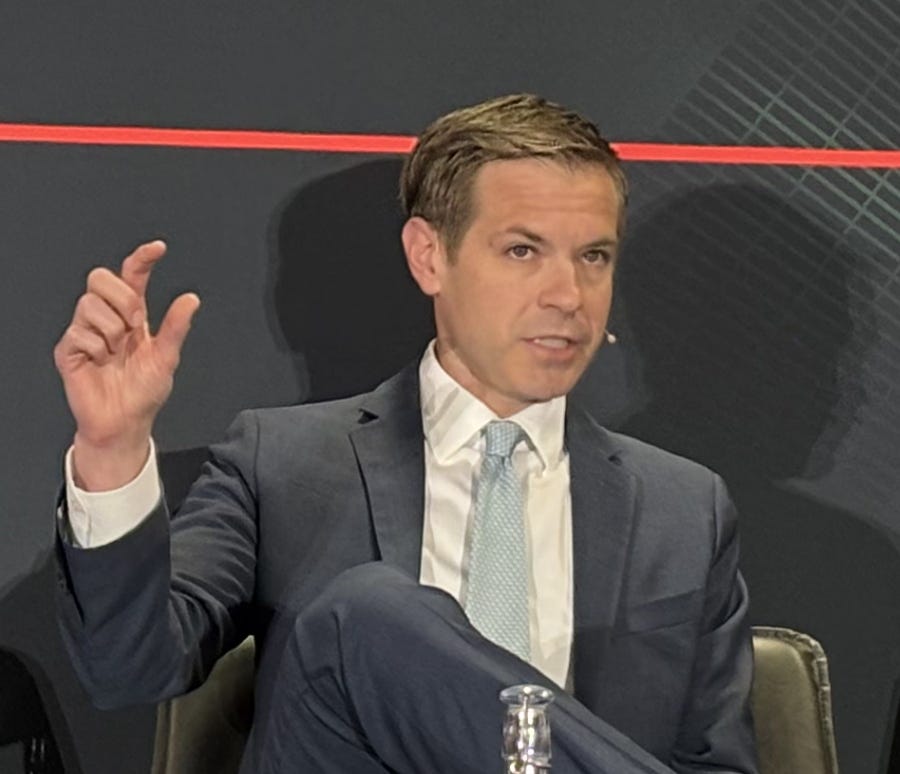Infleqtion Builds Commercial Quantum Tech with Clocks and Sensors at the Core
With neutral atom technology, Infleqtion delivers deployable quantum clocks and sensors while laying groundwork for scalable computing systems
Quantum computing’s most transformative breakthroughs may not begin with an earth-shattering algorithm, but with the ability to complement and enhance classical computing architectures. That is how Infleqtion sees its role—not as a replacement for existing systems, but as a new layer in the computing stack.
“It’s not either-or,” said Matt Kinsella, Chief Executive of Infleqtion. “It’s very much a work-together model to solve complex problems.”
In his view, quantum processors will eventually operate alongside CPUs and GPUs, carving out tasks that classical systems cannot efficiently handle, especially in material science, chemistry, and optimization.
“The Department of Energy’s supercomputers spend much time on material science,” Kinsella said. “Those are the kinds of applications that quantum computers are going to be able to help with—sticky chemistry-type problems that classical computers just can’t solve well.”
Kinsella draws a direct parallel to the rise of GPUs. Initially deployed for graphics, they later became essential to deep learning. He envisions a similar trajectory for quantum processing units (QPUs), operating in tandem with traditional systems and taking on a specialized role as the technology matures.
Logical Qubits and Commercial Viability
Infleqtion doesn’t measure success by raw qubit counts but by developing logical qubits— error-corrected and capable of stable computation. Logical qubits are essential to achieving what many call “quantum advantage”—the point at which quantum computers outperform classical ones on meaningful tasks.
“The quantum advantage to me is when a for-profit company buys a quantum computer using cash off their balance sheet because they believe they will earn a large return on that expenditure,” Kinsella said. “That’s when we’ll know the technology is commercially viable.”
Until then, governments or academic institutions will support most quantum computer sales. Infleqtion has sold systems to the United Kingdom and Japan, but Kinsella says these are still early, strategic deployments—not purchases driven by market forces.
Material science remains the most promising first frontier. Reaching 100 logical qubits, Kinsella explained, would likely be sufficient to demonstrate commercially useful quantum applications in that space. The number of physical qubits needed for this goal depends on error correction techniques, with estimates ranging from 100 to 1,000 physical qubits per logical qubit.
Infleqtion has publicly committed to achieving 20 logical qubits by the end of 2025, 60 by 2027, and 100 by 2028.
“That’s what we’ve said we’ll do,” Kinsella emphasized. “Logical qubits are the benchmark we should focus on.”
Quantum Sensing as a Launchpad
Quantum sensors may offer one of the earliest use cases for quantum computing, not in abstract simulations, but in processing vast amounts of quantum data from the field.
“When quantum sensors gather data, especially radio frequency (RF) sensors, they produce far more than classical systems can handle,” Kinsella said. “That’s an early use case for quantum computers—interpreting the signal stream.”
This mutual reinforcement between quantum sensors and quantum computing is central to Infleqtion’s product strategy. The sensors serve today’s needs while laying the foundation for tomorrow’s quantum processors. At the same time, building commercially viable hardware involves more than science—it requires engineering, consistency, and field readiness.
“Can you build something that works reliably? That has a warranty, a user manual, and performs the same every time?” Kinsella said. “That’s a different level of rigor. You can’t send a quantum technician with a screwdriver to adjust it every week.”
These insights were shared during Kinsella’s appearance at the Commercializing Quantum Global 2025 event on May 13-14 in London, where he emphasized the importance of moving beyond the research lab and into real-world deployments.
From Clock Sales to Space Qualification
While Infleqtion is building toward future computing systems, its current business is rooted in mature technologies—specifically, atomic clocks and quantum sensors that are already commercially deployed.
“Our atomic clock, Tiqker, is probably the first commercially viable quantum product in the market,” Pranav Gokhale, Infleqtion’s General Manager and Vice President of Computing, told TechJournal.uk in an interview on the sidelines of the event.
Tiqker is a hot atom, rubidium-based atomic clock that delivers precision timekeeping in a compact format. It was developed through a program sponsored by the Defense Advanced Research Projects Agency (DARPA), a U.S. Department of Defense agency that funds emerging technologies for military use.
“Tiqker ticks faster than the cesium atom, which defines the second, giving it better time division and accuracy,” Gokhale said. “That’s critical for GPS-denied environments, and we’ve already sold tens of millions of dollars’ worth of units to defense and infrastructure clients.”
Infleqtion has also begun preparing Tiqker for space. While parts of its underlying technology are already aboard the International Space Station, the company is working with the U.S. Air Force to achieve full space qualification. This includes ensuring radiation hardening and autonomous operation for long-term missions to the moon or Mars.
Meanwhile, Infleqtion’s quantum-enhanced inertial navigation sensors operate on the same neutral atom platform.
“Our sensors are like the accelerometers in your phone—but much more precise,” Gokhale said. “They detect acceleration and rotation based on how atomic waveforms interfere. It’s quantum physics in action.”
The sensors are already being tested in real-world scenarios. In the UK, they were deployed on a defense aircraft to demonstrate navigation capabilities without GPS.
“It worked,” Gokhale said. “That’s a huge step forward.”
Infleqtion also won a $2 million contract through the UK’s SAPIENT program to develop sensor fusion software integrating data from computer vision, RF sensors, and inertial systems.
On the software side, the company’s qLDPC error correction library—short for quantum low-density parity check—has been open-sourced in collaboration with JPMorgan Chase. It dramatically reduces the number of physical qubits needed to construct logical ones. “With qLDPC, we can go from 1,000 physical qubits per logical qubit to 20,” Gokhale said.
The following two years will be about scaling.
“We expect to see hundreds of clock orders in that time,” he added. “And more breakthroughs in quantum computing applications will follow. The clocks and sensors aren’t just supporting technologies—they’re the engine moving us forward.”




